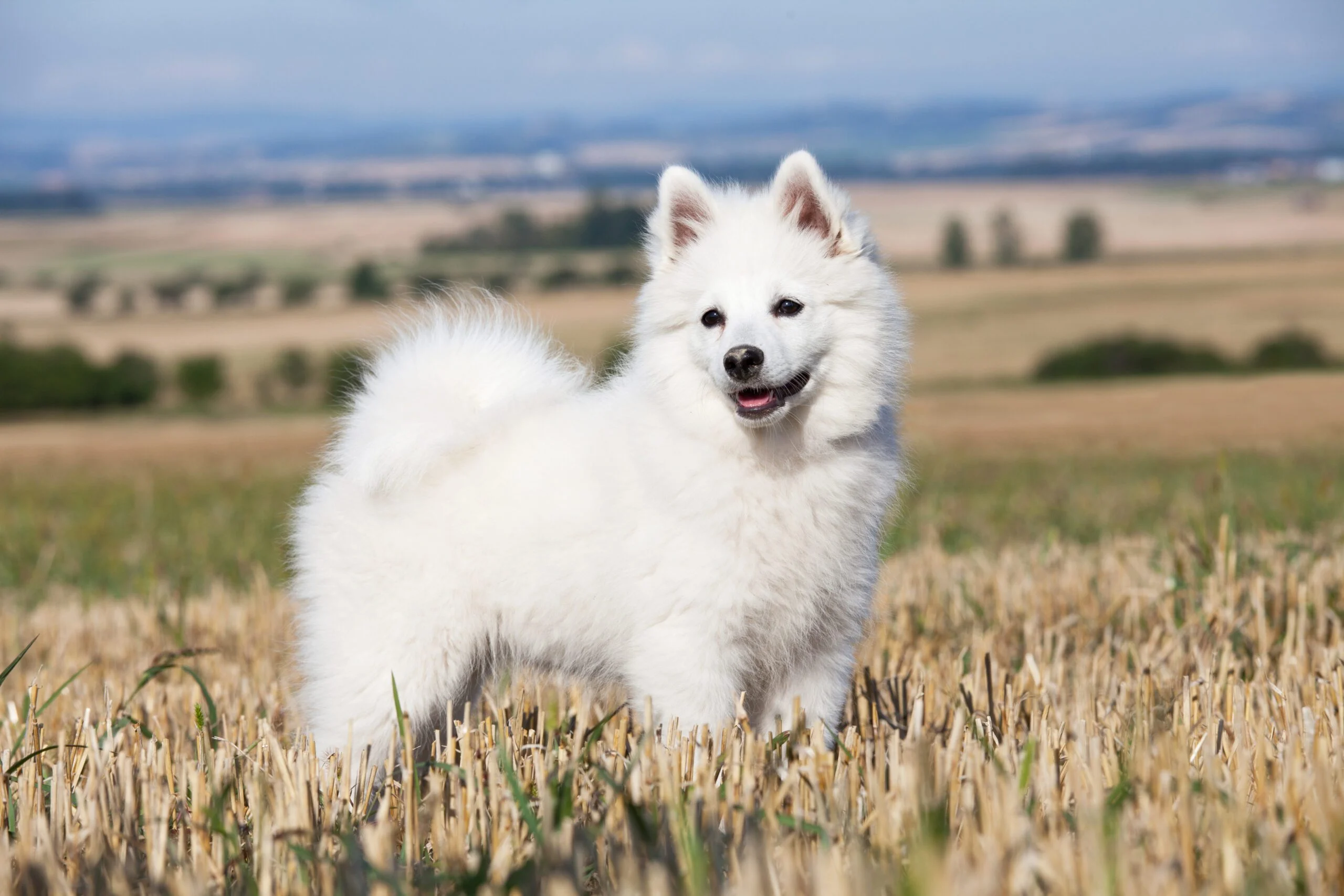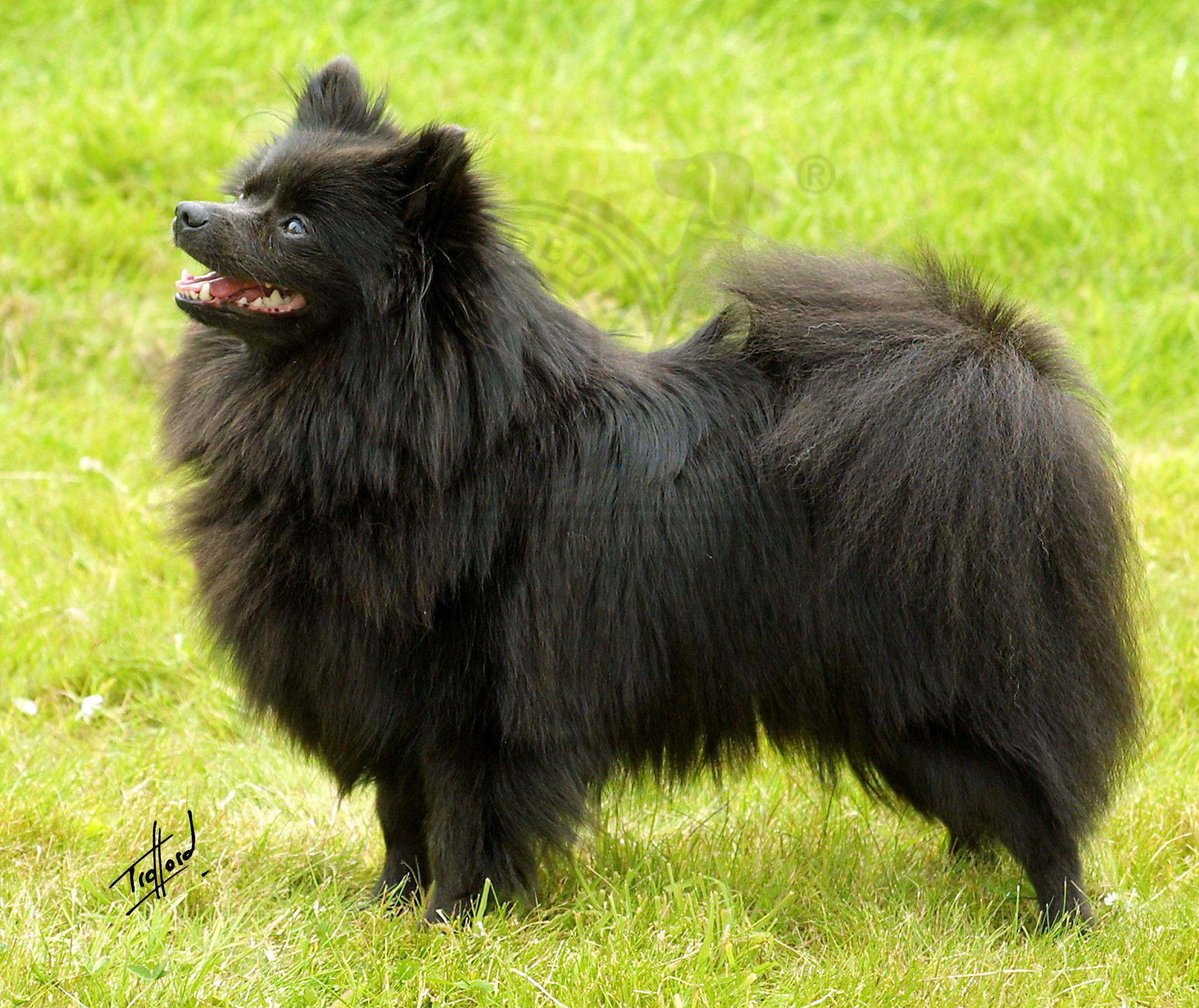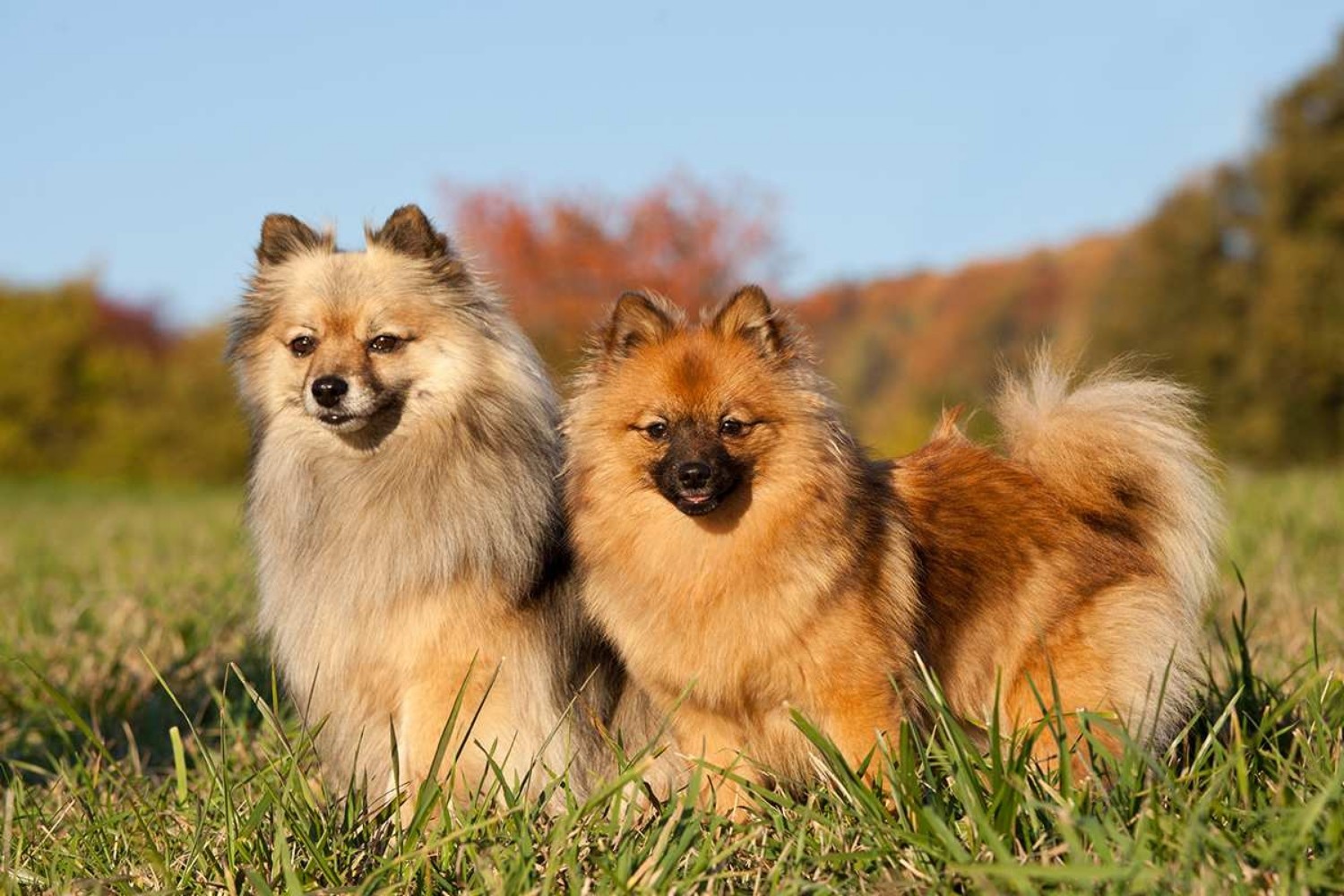
The German Spitz is a descendant of ancient Nordic dogs, with roots going back more than a thousand years in central Europe. It is considered one of the oldest dog breeds in Germany, used historically as farm watchdogs and companions. Over time, various sizes and types of the German Spitz were developed, ranging from the small Pomeranian (Toy Spitz) to the medium Mittelspitz and the larger Keeshond (Wolfsspitz), though in some registries the Keeshond is considered a separate breed.
German Spitz dogs were highly valued for their loud bark, fluffy coat, and lively personality, particularly in rural areas where they kept watch and served as loyal household companions. The breed gained wider recognition in the 19th and 20th centuries, and today is officially recognized by the FCI and UK Kennel Club, and represented in various forms in the AKC’s Foundation Stock Service.
While less known than its smaller cousin the Pomeranian, the German Spitz is gaining popularity thanks to its intelligence, charm, and striking appearance. Its adaptability makes it ideal for a range of households—from city apartments to countryside homes.
Depending on the region, German Spitz may be classified into size varieties, including:
• Klein (small)
• Mittel (medium)
• Gross (large or Giant Spitz)
These dogs are known for their vivacious personalities and fox-like faces, making them appealing to pet lovers who enjoy an active, clever, and eye-catching companion.
The German Spitz is known for its plush double coat, sharp ears, and curled tail, giving it a distinctive and elegant silhouette.
• Coat: Long, straight, and profuse outer coat with a dense, woolly undercoat. Requires regular brushing.
• Color:
o A wide range including white, black, brown, orange, cream, sable, gray-shaded, and more.
• Size:
o Kleinspitz: 9–11 inches (23–29 cm), 18–22 lbs (8–10 kg)
o Mittelspitz: 12–15 inches (30–38 cm), 22–35 lbs (10–16 kg)
o Grossspitz: 16–20 inches (40–50 cm), up to 40 lbs (18 kg)
• Head & Expression: Fox-like with a pointed muzzle, small, dark eyes, and a keen expression.
• Ears: Small, erect, triangular, and alert.
• Tail: High-set, plumed, and curled tightly over the back.
• Body: Compact and square in build—elegant yet sturdy.
German Spitz dogs are alert, intelligent, and vivacious, known for their loyalty and liveliness.
• Alert and Watchful: Excellent watchdogs—quick to bark at new stimuli.
• Lively and Energetic: Loves to play, go for walks, and learn new tricks.
• Affectionate but Independent: Enjoys family life but also comfortable being alone for short periods.
• Vocal: Naturally expressive and protective—will alert to strangers and unusual noises.
• Intelligent and Trainable: Quick learners, especially when training is reward-based and engaging.

This breed is perfect for those looking for a cheerful, smart, and eye-catching companion who also makes a great household sentinel.
• Low Maintenance Size Options: Available in several sizes to fit different homes.
• Family-Friendly: Gets along with children and other pets with proper socialization.
• Highly Trainable: Enjoys games, obedience, and even agility.
• Attractive Coat and Appearance: Always stands out thanks to its thick coat and animated expression.
• Vigilant Companion: Ideal for those who appreciate an alert and communicative dog.
Although energetic, the German Spitz is adaptable and relatively easy to manage for committed owners.
• Training:
o Start early with socialization and basic obedience.
o Use positive reinforcement—Spitzes don’t respond well to harsh correction.
• Exercise:
o Needs daily walks and mental engagement, but not overly demanding.
o Games and indoor play work well for small-space homes.
• Grooming:
o Brush 2–3 times a week to prevent matting and manage seasonal shedding.
o Regular eye, ear, and nail care recommended.
• Nutrition:
o Feed a balanced, portion-controlled diet to maintain healthy weight.
• Companionship:
o Enjoys being near family—not ideal for very long separations.

The German Spitz is a generally healthy and long-lived breed, often reaching 12–16 years. Common health issues include:
• Dental disease (common in small breeds)
• Luxating patella
• Eye problems (e.g., cataracts)
• Hypothyroidism
• Weight gain if under-exercised
Regular vet checkups and good grooming habits help ensure a long, happy life.
Compared to the Pomeranian, the German Spitz is larger, more robust, and slightly calmer. It’s less aloof than a Chow Chow, and more watchful and lively than a Shih Tzu. If you admire the look of a Nordic dog but want something more compact and companionable, the German Spitz hits a sweet spot.
If you're seeking a cheerful, alert, and attractive companion who enjoys both indoor cuddles and outdoor adventures, the German Spitz may be perfect. Best for homes that enjoy interaction and don’t mind a bit of barking, this breed offers intelligence, loyalty, and fluffy charm.
Not recommended for households that need a completely quiet or low-energy dog.
United Pet Club helps prospective German Spitz owners connect with ethical breeders and adoption options, while offering ongoing support in training, grooming, and health care. Discover why the German Spitz continues to win hearts with its alert eyes, spirited personality, and classic good looks.